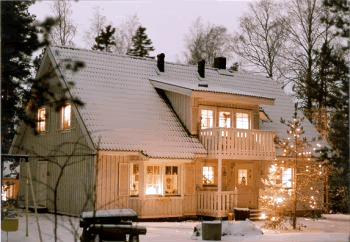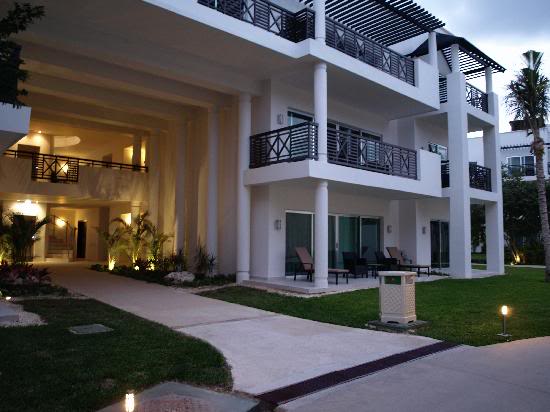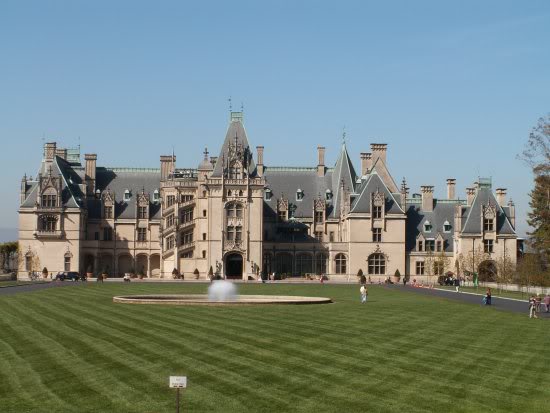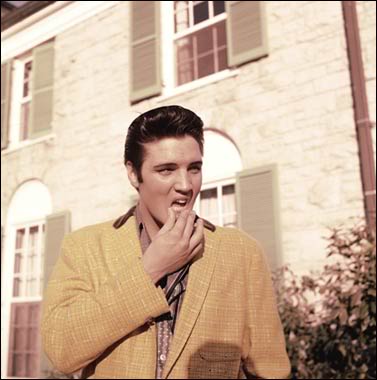
Winter Curb Appeal
|
|

Winter can be a tough time to have
your home and lawn look its finest for potential buyers. Still,
there are a number of things you can do to make your home look and feel
like a warm and inviting place, which is exactly what anybody standing
outside is looking for.
Starting from the street, take a
look at your yard. Hopefully, you have some evergreens in your
yard that are keeping things green. Also, make sure that the
street number is visible from the road. The path to your home
should be clear and safe for guests. This means keeping walking
paths clear of snow, ice, and debris. If you have snow, keep it
as pristine as possible. Don't let the dog romp in the front
yard, and make neat piles if you shovel.
Warm porch lights can help to give a
home a little extra sparkle during this time. You might also
choose to place some cold-hardy plants on your front porch and bring
life to the place. People aren't expecting flowers, but subconsciously,
they will be looking for signs of cultivated life. In that vein,
make sure bushes and trees are pruned and that pine needles, leaves
and compost are neatly contained.
Your
home being for sale might seem like a great excuse to go all out with
your Christmas decorating, but in fact, this is something that will
likely detract from the exterior aesthetic. People want to
envision themselves in the home, and they may or may not share your
tastes or even celebrate Christmas. Go with tasteful lights and
wreathes; leave the eight-foot inflatable snowman in storage.
|
|

Investing in Foreign Real Estate
|
|
Investing in foreign
real estate is often very appealing, both for reasons of desiring to
own properties in areas for vacation or part-time residence , and for
financial reasons of acquiring purchases that will appreciate with
time. Developing countries on their way up, especially those who
have recently joined the European Union, are popular choices because
this usually hints at a strengthening economy where property values are
increasing.
There are also very clear risks
involved in foreign real estate. First, there is the matter of
currency and exchange rate. If you are investing in a project and
the exchange rate shifts, you might find yourself paying a great deal
more (although it could be less) than you had intended. Similarly,
if the economy in the country you are investing in experiences
recession, you will lose property value and have paid more for the real
estate than it was worth.

Foreign real estate scams are also a
possibility in the case of overseas investors in projects that never
actually get finished, or don't turn out as advertised. To avoid
dealing with crooks, it can help to have an overseas independent
partner (a professional is best) in the location where you are
invested. Find someone who is able to check up on things for you and
represent your interests in person.
|
|

Hard Times For Buying a Condo
|
|

Once upon a time, before the housing
bubble burst, condos were selling and being flipped like
hotcakes. Financing was easy to procure and the waters were smooth
sailing. After the economic difficulties arose, however, even
potential buyers with more than adequate credit were being turned away
by lenders. The reasons for this were twofold: concern over
the dropping prices and high speculator ownership.
Financial woes can quickly spiral out
of control for condos, especially when a large number of the units do
not sell and therefore go into foreclosure. When that happens,
homeowners association fees aren't paid and utility companies can stop
services. Common areas cease to be cared for, and soon, nobody
would even be interested in making a purchase.
Entry-level
purchases have become more difficult to make because less financing is
available. All said and done, these are the main issues facing
potential buyers. They certainly don't apply in all situations, so if a
condo is your dream – there is likely still a way to achieve it.
|
|

Contact Information
|
|
|
|

Contact me:
|
|

The Biltmore Estate
|
|

The largest privately owned home in
the United States, the Biltmore Estate is a French-Renaissance style
mansion that was built for George Vanderbilt. At 175,000 square
feet, the home is far more than the "little mountain escape" that
Vanderbilt deemed it. At the time it was being built and used as a
family home it was a large employer in the area, bringing many
craftspeople to settle in Asheville, North Carolina. This remains
true today. The home is now open to the public.
The grounds were laid out by
Frederick Law Omlsted, including the three mile approach which was
designed to showcase nature at her best. A stream was even
rerouted to run alongside the three mile entrance to give guests a
feeling of rustic nature. The Biltmore Estate was meant to be its
own self-sufficient entity, and Vanderbilt set up a dairy; poultry,
horse and cattle farms; a church; and a village (Biltmore Village); as
well as scientific forestry programs. After his death, Edith
Vanderbilt sold 85,000 of the estate's 125,000 acres to the federal
government. Today that land is the heart of Pisgah National Forest and,
in keeping with Vanderbilt's wishes, the land will remain forever
unaltered.
|
|

Graceland
|
|

Graceland, the home of Elvis Presley,
is the second most visited historic home in America. As of 2006,
the home has borne the designation of a National Historic
Landmark. Located in Memphis, Tennessee, the home is known more
for its history than its architectural style, although many of the
modifications made are quite noteworthy.
The home is an eight bedroom home
constructed of tan limestone with Corinthian columns and a number of
surprises inside. Among these is the famous Jungle Room which contains
numerous modifications, including an indoor waterfall. The
fieldstone wall and music-themed wrought-iron gate, as well as the
swimming pool and racquetball court are also Presley's additions.
The meditation gardens were opened to
the public in 1978, and then in 1982, Graceland itself was opened to
the public. With decor that many describe kindly as "garish,"
Graceland is a destination about Elvis, not architecture and
design.
|
|
|
|

